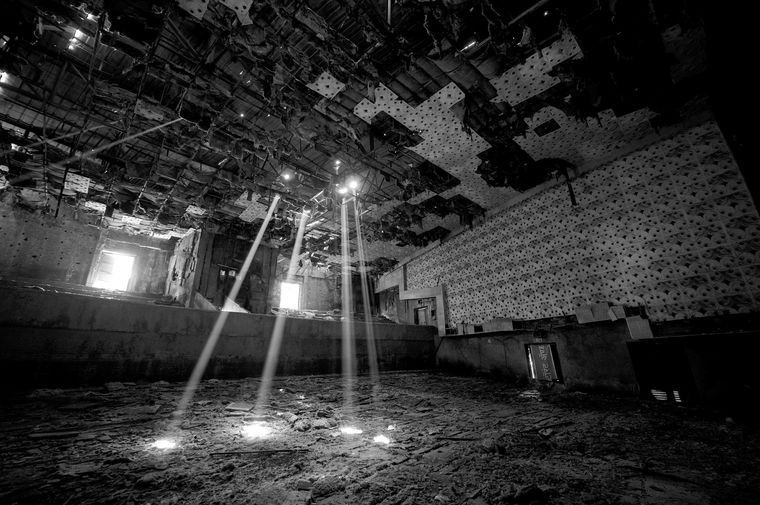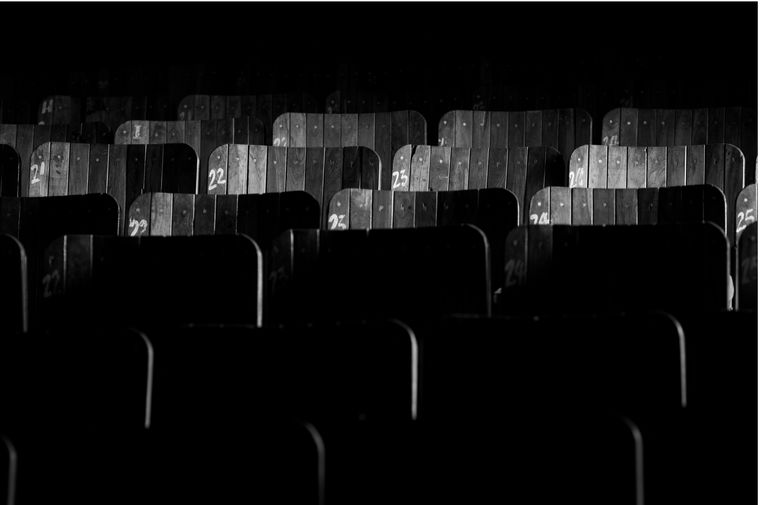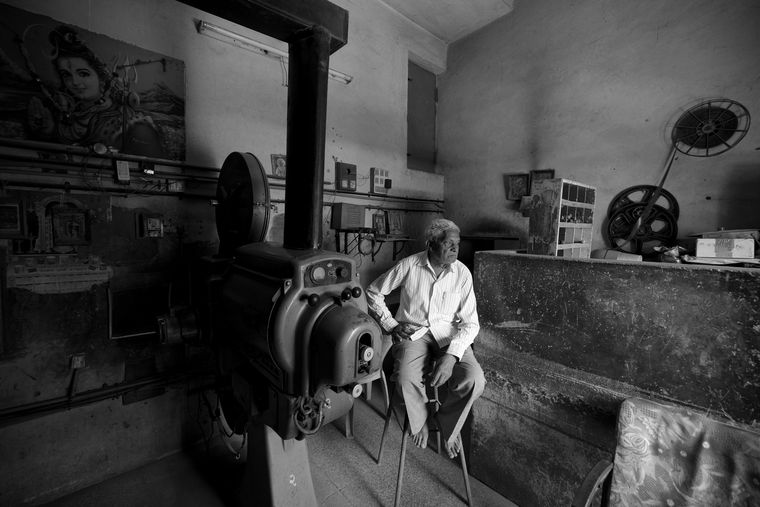Hemant Chaturvedi, 52, who has done the cinematography for films like Company (2002), Maqbool (2003), Ishaqzaade (2012) and Kurbaan (2009), remembers seeing his first film as a six-year-old at a single-screen cinema in Assam, where his father, an Air Force officer, was posted at the time. “It was one of those makeshift cinemas where you watched the film sitting on Dalda tins. The I.S. Johar film was about a dog and a rifle. Halfway through the film, the reel got burnt and we returned home. That was the end of that,” he says with a laugh, adding that he has always wanted to watch the rest of the film on YouTube but has never gotten around to it.
Over four decades later, Chaturvedi was at the Kumbh Mela in Prayagraj, which he attends every year. Last year, though, it was a bit “overcooked” because of the political situation in UP, so he decided to take a walk to the Allahabad University. “I get my best therapy when I wander off somewhere with my camera bag,” he says. Along the way, he saw a dilapidated single-screen cinema and went inside to take a look. That was a defining moment for him, when the idea of travelling around the country to document such cinemas first took root. He visited two more of them in the city, one showing B-movies with the audience mostly comprising drug addicts and prostitutes “making mischief in the corners”.
Since then, he has travelled 28,000 kilometres across the country, as far as Kashmir (where four of the cinemas he visited required special permission as they were located inside Army and CRPF camps) and the Indo-Pakistan border in Punjab. He says his journey so far has been exhilarating. “It was just me driving alone with my camera in my Jeep,” he says. “As it was not possible to research these theatres beforehand—not much information about them is available online—you would get an idea of what one looked like only when you parked in front of it.” He plans to compile the stories and photographs of the 525 single-screen theatres he visited into a book and a series of exhibitions.
Chaturvedi is brimming with stories about his expeditions. Like the time he visited a cinema called Asha Talkies in central Maharashtra and the owner told him about his grandfather who constructed it in the 1940s. He overspent on construction and could afford only one of the two required projectors. This meant that there would be an interval of three to four minutes every time the reels were changed. So the grandfather hired a troupe of Lavani dancers and set up a small stage in front of the screen, with a halogen spotlight and a colourful spinning wheel. When the reels needed to be changed, he would switch on the light. That was the cue for the Lavani dancers to come in and entertain the audiences. Once the reels were changed, he would switch off the light—the cue for them to exit.
Then there was the time Chaturvedi hunted down a theatre called Deval Talkies in Maharashtra. In the projector room, he noticed an old, black-and-white group photograph with the inscription: “Deval’s Circus, 1946.” Upon inquiring, the owner told him that for over 200 years, his family had been in the business of training wild animals for maharajas, like pet cheetahs to sit next to them on their thrones. In the 1800s, they decided to start a circus. This was the last remaining photograph of the troupe, before the ship in which they were sailing to Africa sank. If you had come a year earlier, the owner told Chaturvedi, you could have met my great-grandfather. Even though he was blind, if you gave him three balls, he would immediately start juggling them for as long as you asked him to.
Chaturvedi gave up being a Bollywood cinematographer in 2015. The problem, he says, was the content he had to shoot. He could be standing in front of the Northern Lights at just the right moment, with the perfect frame and aperture. And instead of the beauty of the lights, he would have to capture Salman Khan “twitching his boobs” in a song-and-dance sequence. “You need to shoot something that matches your passion,” he says. Since then, he has done over 12 projects, including one on cemeteries and another on Hindustani classical music, which were intensely satisfying because they were “purely mine”, he says. He travelled, shot and financed them all on his own. “I know I might run out of money sometime,” he says. “Then I might have to rethink, but I don’t live in that fear. Even if I have to sell something from my home to self-publish my work, I will do it.”
According to him, some of these single-screens are disappearing almost overnight. Many theatres have closed down during the lockdown without any plans to restart. “If I had to do a book on multiplexes, I could tell their story through one multiplex, because all of them are identical. But each of these old cinemas is unique—in their architecture, artistic leanings (which reflect the ambition of the owners) and the ecosystem around them, which includes the juice stall owners and the black-market ticket sellers.”
The theatre experience, too, was different in those days, he says. In a theatre with a capacity of 1,000 seats, tickets would be sold to 1,500 people. There would be people hanging off the balconies, sitting on each other’s laps, spouting dialogues, throwing money at the screens and dancing in the aisles when a song came on. “The belief was that if someone went for a pee during a song, the film would be a flop. But if they held it in and went to the loo after the song, the film would be a hit,” says Chaturvedi with a laugh.





